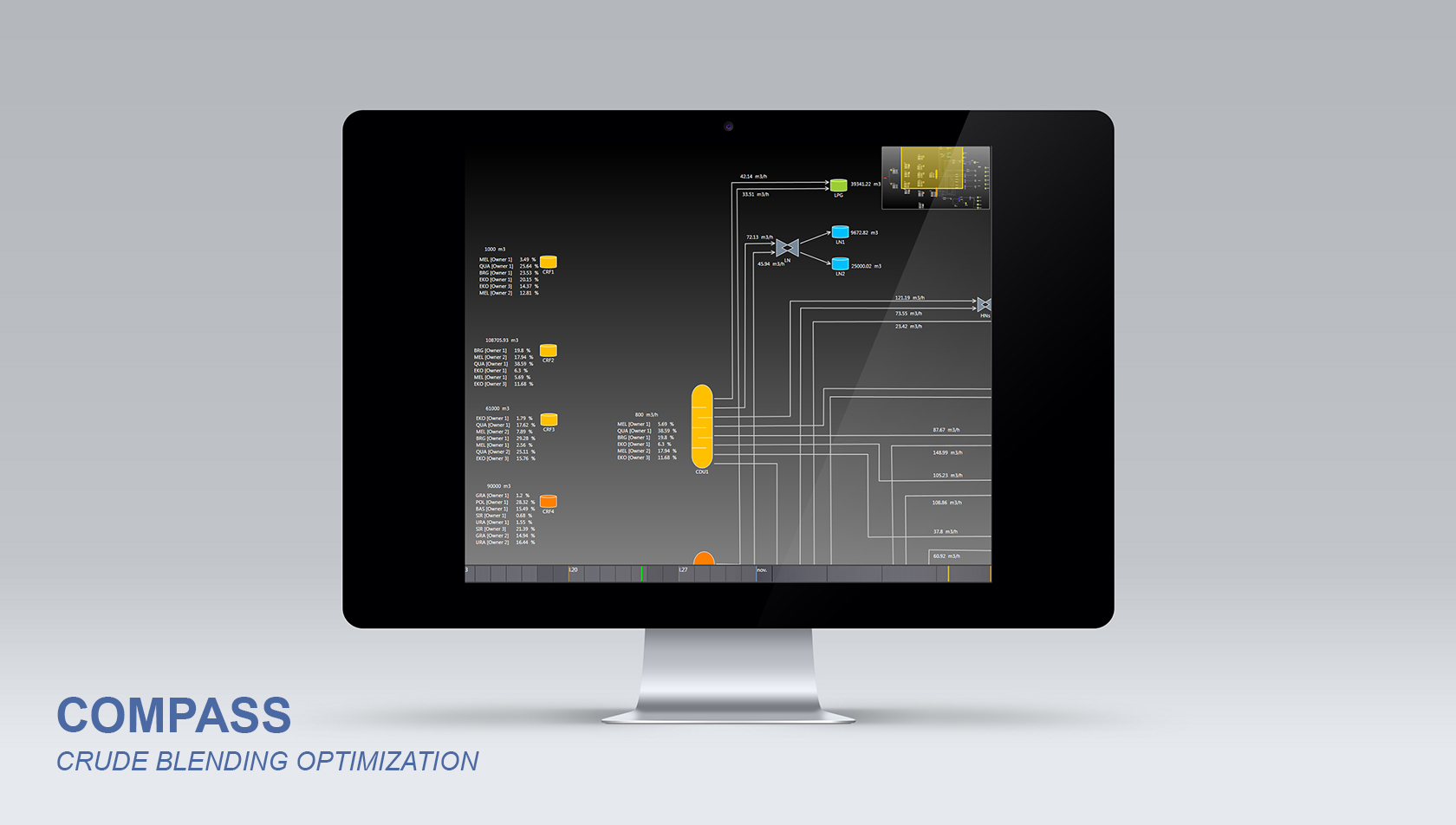
Blending and sequencing crude oils: no more headaches, just performance!
Crude blending optimization…
In a context where refining margins are squeezed by overcapacity, a cost-competitve access to crude oil can significantly boost a refinery’s margin.
Crudes present high variability in terms of quality, yield structure and products qualities. Correlatively, the price differential between good crudes and low quality crudes can exceed 10 $/bbl: this reflects the difficulty of processing low quality crudes.
Through this simple realization, it is evident that adequate crude blending may yield significant profits. What is meant by adequate crude blending is the ability to compensate for the bad characteristics of one crude by the good characteristic of another. The idea is to benefit from the low prices of certain difficult crudes – but to dilute their otherwise negative effects by mixing them with just the right proportions of higher-quality crudes.

However, things are a little more complex in real life operations, and optimal crude blending is a very challenging problem. This is due both to a large number of constraints, and to a large number of possible combinations (degrees of freedom) in blending and sequencing.
A large number of degrees of freedom
The first source of complexity for the crude blending problem comes from the possibility of mixing crudes at each layer of the system:
Compass: A worldwide unique Crude Blending and sequencing optimization system
In return, it tells planners and traders that it is OK to purchase low cost crudes.
- Crude arrival schedule
- Crude blend quality restrictions: acidity, metals, ConCarbon
- CDU feed and rundown capacities Side streams quality limits
- Crude segregation
- Specific logistical restrictions
Quantifiable benefits... several millions of dollars per year
- Improved options, through the implicit enumeration and evaluation of thousands of scenarios
- Increased capacity utilization and throughput
- Intelligent use of opportunity crudes is made possible through adequate crude blending
- Improved yields and reduction of quality giveaways
- Optimised crude storage & Reduced demurrage costs
- Improved control and visibility for downstream operations
